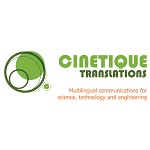MIMIT ambassador wins NIHR i4i Product Development Award

MIMIT Ambassador Brendan McGrath and team have been awarded the NIHR (National Institute for Health Research) i4i Product Development Award worth £641,003 for Above Cuff Vocalisation (ACV), a MIMIT supported project that was matched with a solution at a MIMIT forum.
Tracheostomies are small plastic tubes inserted into the neck. These ‘artificial airways’ are used most commonly in the Intensive Care Unit (ICU) for patients who are weak, or who need breathing support from a ventilator. Some Head & Neck surgical operations also need a tracheostomy. Around 20,000 new tracheostomies are inserted in the UK each year, with around two-thirds in ICU patients.
Patients report that when they wake up with a tracheostomy, the worst thing is not being able to speak. Tubes have a balloon or cuff which ‘seals off’ the upper airway (nose and mouth), meaning that gas breathed in and out does not flow through the larynx (voice-box). Patients can be fully awake and yet unable to speak, lasting for days or weeks. Other communication is made worse by weakness, making it hard for patients to tell staff or loved ones how they are feeling, causing stress and worry and makes caring for patients more difficult.
Brendan and the team's research shows that if the voice-box is not used for several days, the muscles become weak. As patients start to recover, the weakened voice-box makes swallowing, coughing, talking and getting off the ventilator more difficult and the process takes longer. The research demonstrated that making the voice-box work by getting patients talking earlier had a positive effect on voice-box function, as well as giving patients back the gift of speech.
The ACV project aims to get patients with new tracheostomies talking earlier in their treatment, by developing a safe and effective system to deliver gas flows ‘above the cuff’ of the tube, and out of the mouth via the voice-box.
ACV can only currently be delivered using a continuous flow of cold, dry gas, without safety features. The first two years of this new project involves designing and testing a new product to safely deliver warm, moist gas for ACV, delivered when the patient wants to speak, and ensuring patient comfort.
The final year of the project involves conducting a study using the device developed and comparing it to tracheostomy patients who do not use it. Brendan and the team will work with patients, doctors, nurses and speech and language therapists to record the effect that the device has on:
- Talking: can patients talk earlier and with a better voice?
- Eating: can patients swallow earlier?
- Stress and worry
- Time spent in ICU or in hospital
By the end of this project, the team aim to have developed a carefully tested (clinically validated) prototype medical device that is able to safely and effectively deliver ACV, helping patients communicate and speeding up their recovery.
Further information on the technique can be found here.

























